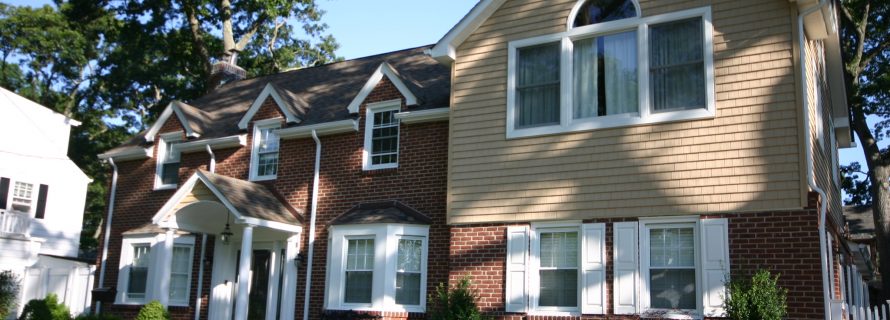Vinyl Siding

Performance. Beauty. Value.
Performance. Beauty. Value. Whether you’re planning a neighborhood, designing or building a single house or an entire development, or remodeling an existing home, these are attributes you’ll certainly want to offer your customers. And you can by including vinyl siding as the exterior cladding of choice. You may be surprised what you can achieve using vinyl siding, architectural trim and accessories. Vinyl siding helps create houses and neighborhoods with distinctive style and unique character that appeal to homebuyers and homeowners alike. And helps build communities of undeniable attraction and lasting value.
Look around. You’ll soon discover why America sides with vinyl at a rate nearly double that of any other exterior cladding material.
About Vinyl Siding
Vinyl siding was first introduced to the exterior cladding market in the early 1960’s and steadily grew in popularity over the next four decades because of its durability, versatility and ease of maintenance. The product is manufactured primarily with polyvinyl chloride (PVC), a material that gives it impact resistance, rigidity and strength.
PVC starts with two simple building blocks: chlorine (57%) from common salt and ethylene (43%) from natural gas. Most of the natural gas utilized to manufacture ethylene is domestically produced, which reduces consumption of imported oil products.
Today, vinyl siding is the number one choice of exterior cladding across the United States and Canada. In fact, U.S. Census Bureau statistics show twice as many homeowners side their homes with vinyl than with any other material. Vinyl siding is available in a broad palette of colors, profiles and architectural trim to assist architects, builders and homeowners in customizing their new construction and renovation designs, and can complement historical restoration projects.
Vinyl Siding Sustainability
Today’s vinyl siding, the most popular choice for exterior cladding in the United States and Canada, delivers recognized environmental benefits to help make and keep homes green.
Throughout the processes of manufacturing, transportation, installation, service life and waste management, vinyl siding scores well on tough environmental measures.
What’s more, vinyl siding has the potential to contribute to achieving more points than other exterior cladding in the leading green building certification programs including the United States Green Building Council (USGBC) LEED® for New Construction and LEED® Homes Rating Systems and the ANSI approved ICC 700-2008 National Green Building Standard.
Additionally, research shows how insulated vinyl siding contributes to savings in energy consumption, energy costs and CO2 emissions. Recent studies sponsored by the New York State Energy Research and Development Authority (NYSERDA) found that insulated vinyl siding outperforms James Hardie fiber cement when comparing environmental and energy performance.
For the environmental facts about vinyl, click here for information from the Vinyl Institute, a U.S. trade association representing the leading manufacturers of vinyl, vinyl chloride monomer, vinyl additives and modifiers, and vinyl packaging materials. Note: By clicking here you are exiting this site. The Vinyl Siding Institute is not responsible for its content.
Designing with Vinyl Siding
 For what type of neighborhood or architecture is vinyl siding the most viable alternative? Any type you can imagine.
For what type of neighborhood or architecture is vinyl siding the most viable alternative? Any type you can imagine.
Residential planning, including traditional neighborhood design and historic restoration projects, demands the versatility of vinyl siding.
Today’s vinyl siding features hundreds of trim and accent options. There are new profile styles. And now there is a broad spectrum of colors that enhance the aesthetics of any neighborhood.
Community leaders who include vinyl siding in their development plans afford neighborhoods the choice of multiple colors, styles and unsurpassed value.
For more information, visit The Vinyl Siding Institute.
- Additions and New Construction
- All Exteriors
- Alterations
- Basements
- Bathrooms
- Customer Service
- Customer Stories
- Decks
- Design & Planning Show
- DIY
- Doors
- Educational Resources
- Extreme Makeover Home Edition
- Fashion Show
- General Remodeling
- Green Living
- Handyman Home Services
- Home Decor
- Home Entertainment
- Home Improvement
- Home Improvements
- How to Tips
- In The Community
- Kitchens
- Off-the-Wall Remodeling Stories
- Remodeling
- Resources
- Roofing
- Siding
- Social Media
- Sunrooms
- Tips & Tricks
- Trends
- Windows

